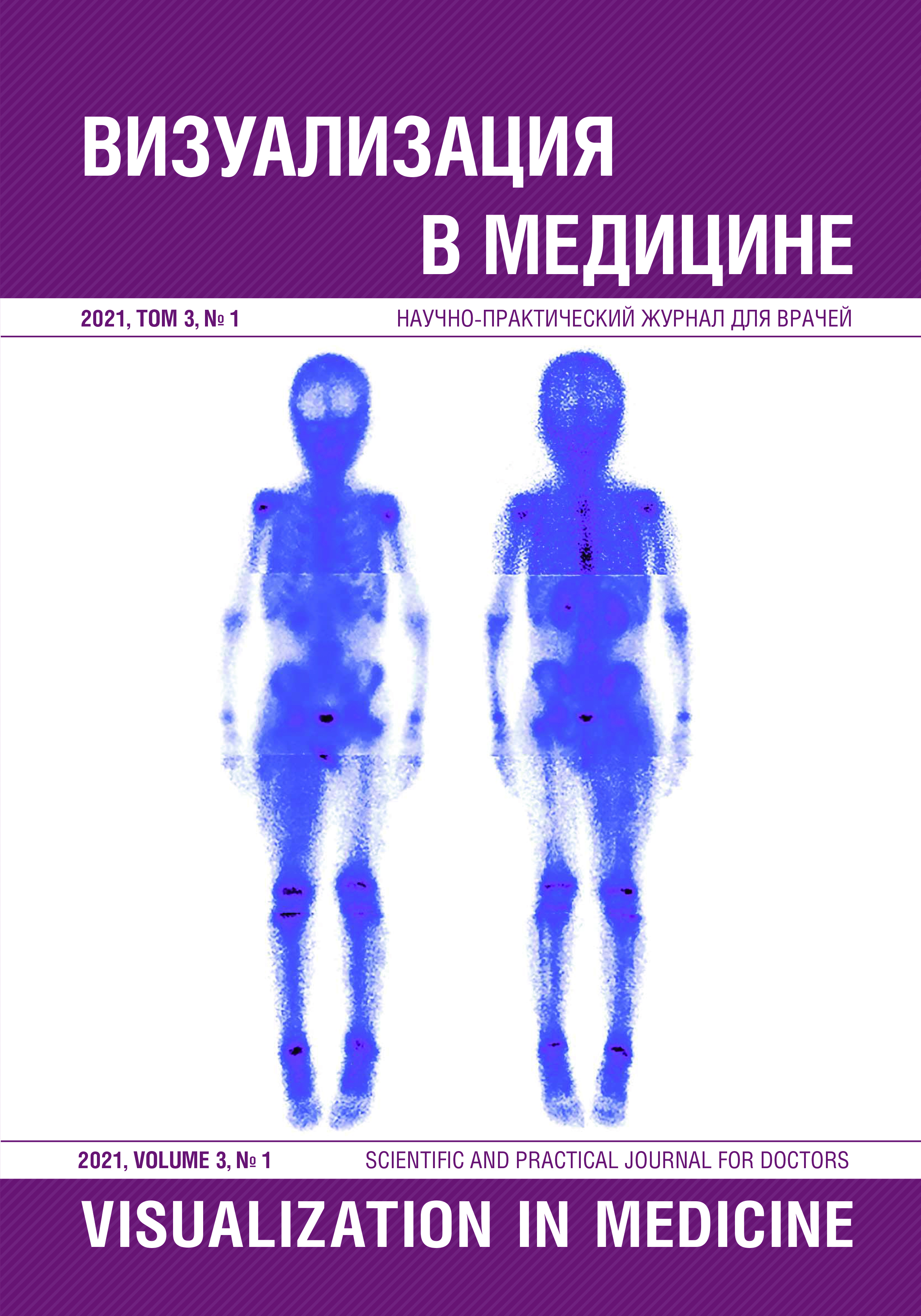DISSEMINATED LYMPHANGIOMATOSIS. CLINICAL CASE
Abstract
A case of diffuse progressive lymphangiomatosis with soft tissue damage of the right lower limb, pelvis, back, destructive changes of the right femur, spine, and cystic transformation of the spleen is presented. Lymphangiomatosis refers to rare benign abnormalities of the lymphatic vessels with a complex form of lesion. Diffuse lymphangiomatosis is a multisystem disease in which diffuse proliferation of lymphatic vessels occurs. It is often found in children and adolescents under 20 years of age. Magnetic resonance lymphography (MRL) with the introduction of a contrast agent is the most effective method of diagnosis at all stages of the course of lymphangiomatosis. Dynamic MR scanning after administration of the contrast agent made it possible to assess the state of the lymph nodes, main lymph collectors and lymph capillaries. Delayed MR scanning was used to determine the location of the contrast agent accumulation in bone structures, which may help in the differential diagnosis with lytic lymphangiomatous bone lesions that may mimic skeletal tumors or metastases. The method of X-ray computed tomography does not allow to clearly differentiate soft tissue structures and detect the accumulation of contrast agent in the bone tissue. X-ray computed tomography allows you to exclude possible tumors of other localizations. The method of ultrasound diagnostics for extensive lesions, as in our case, had low efficiency. However, with local lesions and narrowly focused assessment of soft tissues in one region, it has a good diagnostic result.



